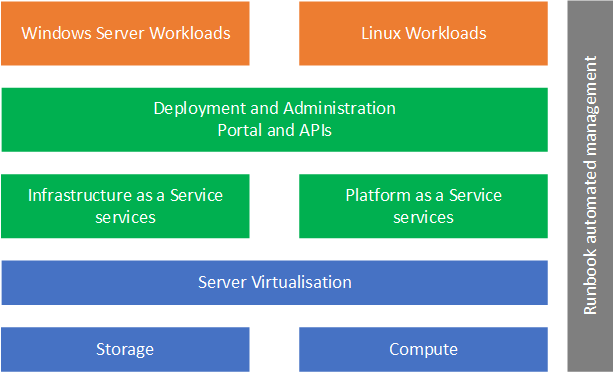Doing more with less – the return of the private cloud
 Gavin Payneis a principal architect for Coeo, a SQL Server and Azure professional services company, and a Microsoft Certified Architect and Microsoft Certified Master. His role is to guide and lead organisations through data platform transformation and cloud adoption programmes.
Gavin Payneis a principal architect for Coeo, a SQL Server and Azure professional services company, and a Microsoft Certified Architect and Microsoft Certified Master. His role is to guide and lead organisations through data platform transformation and cloud adoption programmes.
When private clouds emerged five years ago, the industry wasn’t ready to use the features that differentiated them from server virtualisation. Things have changed. Public cloud technologies have given on-premises teams an appetite for self-service deployments, DevOps automation and usage based billing for the services in their own data centres. Now, the next generation of private cloud platforms – such as Microsoft’s Windows Azure Pack – are ready to feed their appetite.
How private clouds are made
Private clouds wrap deployment, management and billing services around server virtualisation platforms. They provide portal and API based self-provisioning, usage based billing and cloud style services in our own data centres. Ironically, they’ve offered these for longer than most public cloud services have been available - we just weren’t all ready to use them when they first appeared. The green private cloud components in the diagram below show what they add to a modern server environment.
Doing more with less
Today’s private clouds do more than reduce the amount of hardware deployed in the data centre – they also reduce the amount of software deployed. They are one of a new generation of solutions that allow multiple instances of services to share a virtual machine, which itself shares a physical server. Private clouds support the cloud era approach of using several lightweight services hosted on shared servers, rather than the traditional method of software deployment using larger single-purpose servers.
Solutions like Microsoft’s Windows Azure Pack provide these application platforms using private cloud services, as well managing more traditional virtual server environments. Microsoft’s free solution adds functionality to the Windows Server and System Center platforms. It provides Platform as a Service web site, database server and message queue services, and Infrastructure as a Service virtual machine services – all within an on-premises private cloud platform.
Doing more with more
Although the goal of a private cloud is to help organisations do more with less, once deployed they provide access to many new capabilities, including DevOps API support and pay-per-use billing.
DevOps API Support
The Windows Azure Pack integrates with the Microsoft Azure PowerShell cmdlets. These provide command line support for deploying and managing on-premises web sites, virtual machines, virtual networks and cloud services. They allow development teams or system administrators to automate the creation of new environments or maintenance of existing services. The functionality is part of the regular Azure PowerShell download available here.
Pay-per-use billing
One of the big attractions of public cloud services is aligning costs to service utilisation. Although deploying private clouds requires upfront investment, their management software can provide exports of service utilisation data that can then be used for charging the platform’s users. For example, developers might have access to a portal that allows them to deploy new virtual machines themselves. However, to ensure they use the platform sensibly, the infrastructure department might bill project teams every month for their use of the private cloud’s resources. While private cloud platforms can often provide billing data themselves, services like Cloud Cruiser give a professional billing service around the Windows Azure Pack.
